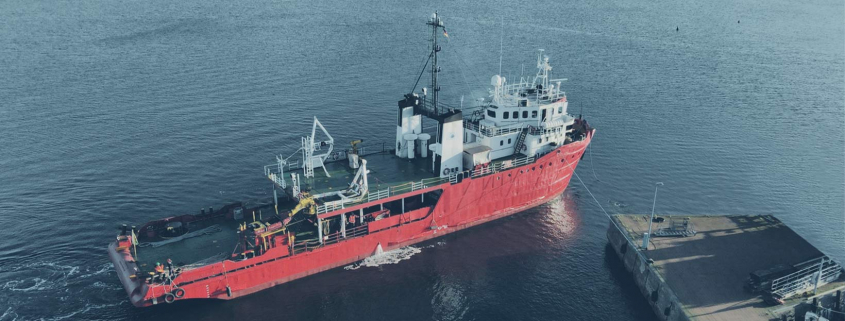Sea-Eye And MOAS Begin Close Collaboration
Sea rescuers from MOAS return to the Mediterranean with the SEA-EYE 4
The aid organizations Sea-Eye and MOAS have agreed to a close collaboration aboard the SEA-EYE 4 with the aim of carrying out search and rescue missions in the central Mediterranean Sea. The SEA-EYE 4 is a 48 year old offshore supply vessel (built in 1972, 55 m long, 11 m wide). Sea-Eye acquired the ship with significant support of the United4Rescue alliance and is currently converting it into a rescue ship.
The common goal of both organizations is to conduct joint operations to save more lives together and to raise awareness for the people who continue to die in the Mediterranean as a result of the EU’s isolationist policy.
“We firmly believe that nobody deserves to die at sea in search of safety, that’s why we founded MOAS in 2013: to save lives. We are very happy about this partnership with Sea-Eye, to share our knowledge and expertise on SAR operations.
Between 2014 and 2017, with our missions in the Mediterranean and Aegean Sea, MOAS rescued more than 40,000 people. Now, together with our partners, we want to rescue as many people at risk as possible. Civil society strongly believes that the implementation of #SafeAndLegalRoutes of migration is important to avoid further deaths at sea,” says Regina Catrambone, Director of MOAS.
“We are proud to bring the MOAS sea rescuers back into action on our ship. This is a milestone for Sea-Eye. Our operational cooperation has one main goal: to save more lives together. Between 2016 and 2017, the Sea-Eye and MOAS crews had met during a rescue mission. Now we are working jointly aboard the SEA-EYE 4,” says Gorden Isler, Chairman of Sea-Eye e. V.
Since 2014 MOAS was the first aid organization to actively conduct rescue operations in the central Mediterranean with the objective of saving people from drowning. The joint missions with the SEA-EYE 4 are planned to start in February 2021. The operational schedules for the missions will be devised together in the coming weeks. MOAS will support Sea-Eye with professional staff, joint search and rescue training, strategic expertise and an international donation campaign.
This year, the Covid19 pandemic in particular has worsened the situation for people who are fleeing and seeking protection, as many countries closed their borders. Mediterranean countries such as Malta, Italy, Greece and Spain continue to be left alone by other EU member states when it comes to accommodating refugees. Germany was painfully slow to meet its commitments to accept refugees in 2020. The German minister of transport and the German minister of the interior even tried to prevent German civil sea rescue ships from continuing operations. State level sea rescue efforts are still not in sight. Of all the people who drowned this year in the Mediterranean Sea, more than 700 people drowned in the Central part of the Mediterranean alone.
“We are resuming SAR operations with the intent of saving as many lives as possible of those seeking protection from war, torture and famine on board of unseaworthy boats. Although we cannot put an end to the instability and ongoing conflicts which force people to leave their countries, we do have a chance to reduce the number of deaths at sea by providing assistance to those who, in their desperation, continue to attempt the Mediterranean crossing,” continues Regina Catrambone.
“The joint missions with the SEA-EYE 4 are planned to start in February 2021. The deployment plans for this will be devised together in the coming weeks,” says Jan Ribbeck, board member and manager of operations at Sea-Eye e. V.

 © sea-eye.org
© sea-eye.org
 © sea-eye.org
© sea-eye.org